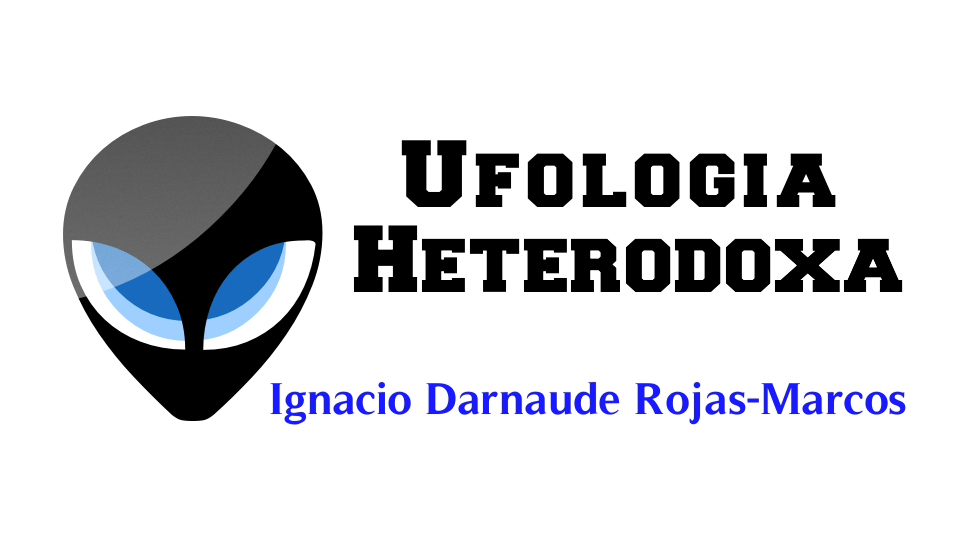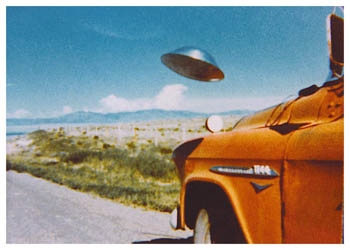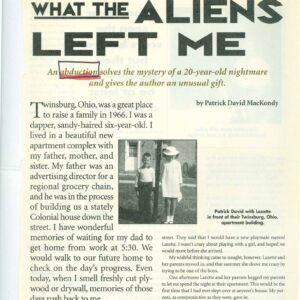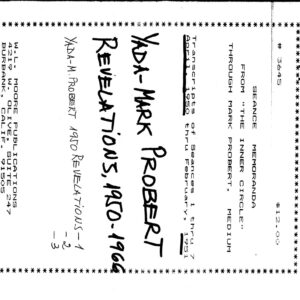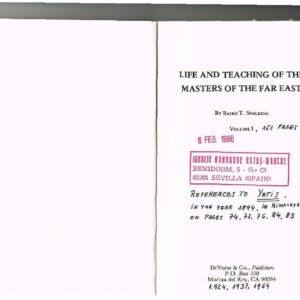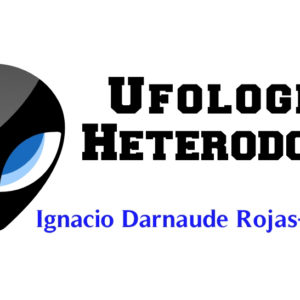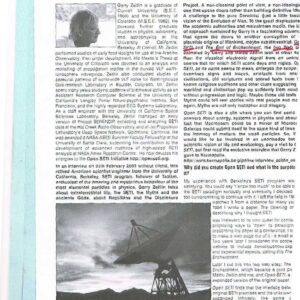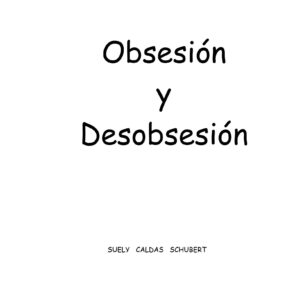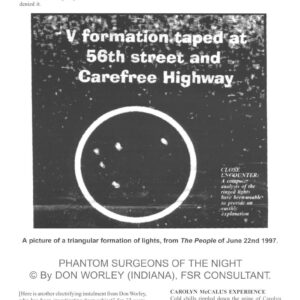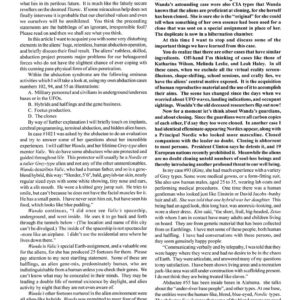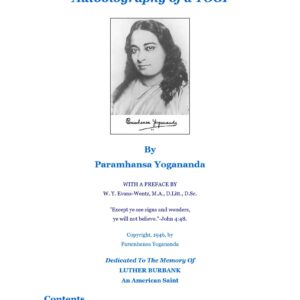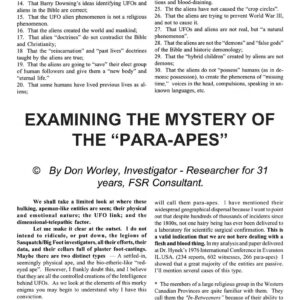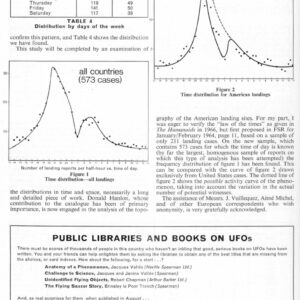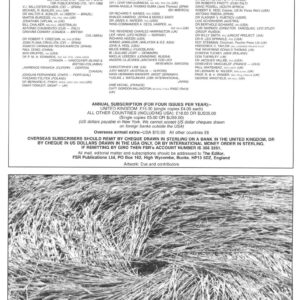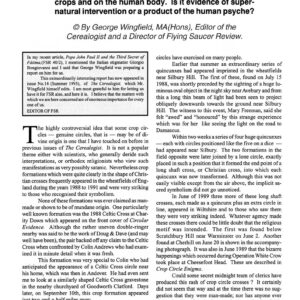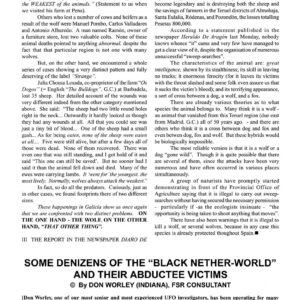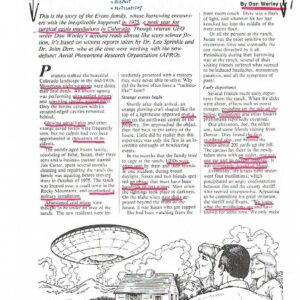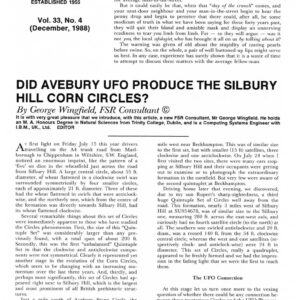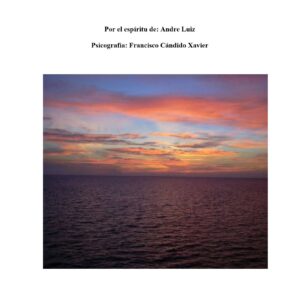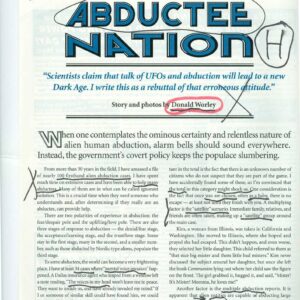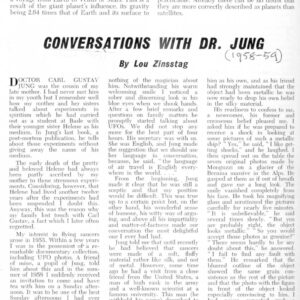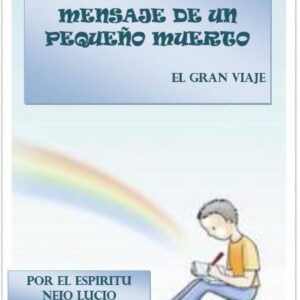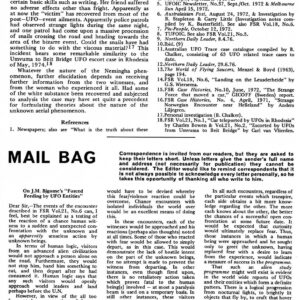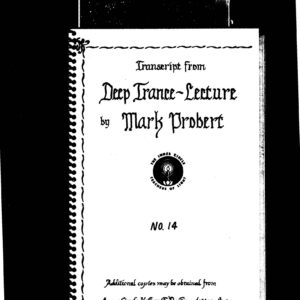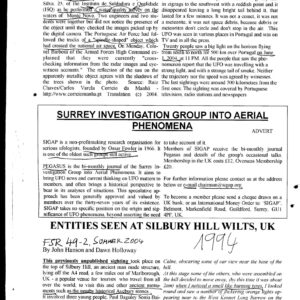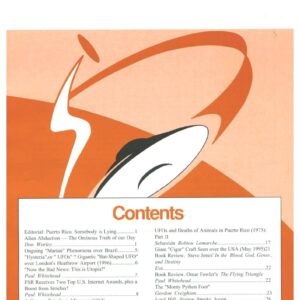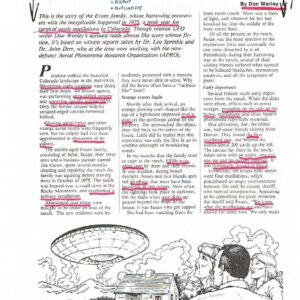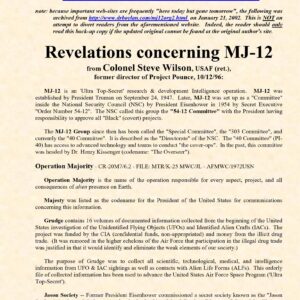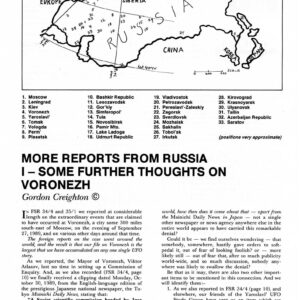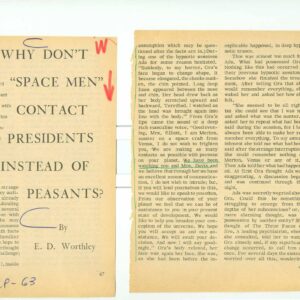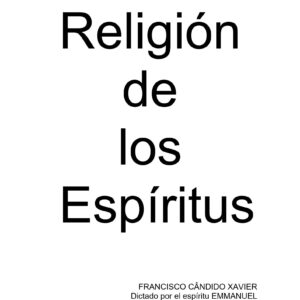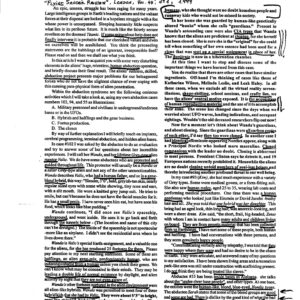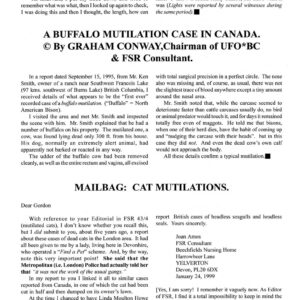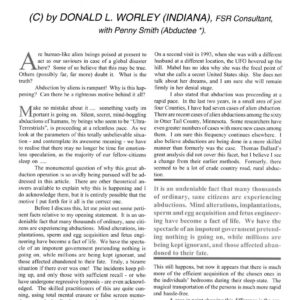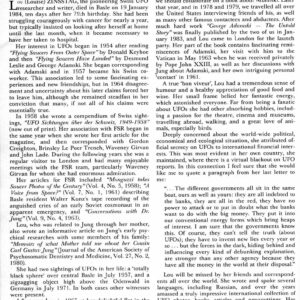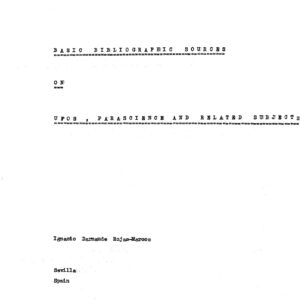The Schirmer Abduction 40 Years Later by Kevin Randle
- Descripción
Descripción
The Schirmer Abduction 40 Years Later by Kevin Randle
FATE Magazine :: May 2008
Starting in the mid-1960s, UFO research found a new category of sighting. The first indication came from South America where a Brazilian farmer (who later became an attorney) told a tale of abduction at the hands of alien creatures. Antonio Villas-Boas claimed that he had been forced into sex on board a flying saucer; some suspected that it might have been some kind of interplanetary breeding experiment, though one that was fairly crude.
A few years later, in 1961, Barney and Betty Hill, a couple living in New Hampshire, reported that their car had been paced by some kind of alien craft. Later, first through dreams and then through hypnotic regression, both Hills recalled an abduction experience. Betty Hill would later say, based on the physical examination she was given by the aliens, that she thought there were lots of little Betty Hills running around out there. She was suggesting that her abduction had been some kind of interplanetary breeding experiment, though more sophisticated than the one performed on Villas-Boas.
UFO researchers looked for additional abduction cases, but in the 1960s there weren’t many of them around.
Around this same time, the Air Force decided to hire a university to make an impartial study of UFOs to determine if there was a reason for the Air Force to continue to investigate them. The so-called Condon Committee, at the University of Colorado, began their work in the 1967.
On December 3, 1967, a police officer in the tiny community of Ashland, Nebraska, reported that he had seen a UFO close to the ground, hovering no more than six or eight feet above the highway. When he turned on his high beams for a better look, the saucer-shaped object brightened, tilted upward, and then with a siren-like noise, lifted and vanished.
Sgt. Herb Schirmer opened his car door to watch as the craft rose, spouting a flame-colored material from under it. He would later say that he saw a row of seven portholes, oval shaped and about two feet across. There was a catwalk below the portholes, and the surface of the object was polished aluminum that glowed brightly in reflected light.
The first part of the Condon Committee investigation of the sighting took place on December 11 and 12, 1967; that date becomes important later. In the summary of the report, the Condon Committee investigator wrote, “Mr. Schirmer felt perhaps he had not been conscious during a period of approximately 20 minutes [emphasis added] while he was observing the UFO. He had a feeling of paralysis at the time, and felt funny, weak, sick, and nervous when he returned to the police station.”
Ashland police chief Bill Wlaschin said that he checked the area the next morning but found nothing of great importance there. He did find a single piece of metallic material that he did not recognize. It looked to be a chip of aluminum paint. In the published version of the Condon Committee, called the Scientific Study of Unidentified Flying Objects (1969), the material was described as iron and silicon. Since there was no real connection between the sighting and the material, no further analysis was done.
Committee investigators searched the site where Schirmer, after hypnosis, would say the UFO had actually landed. They tested for radioactivity but found nothing.
A polygraph for Schirmer was arranged using an experienced official agency that Chief Wlaschin refused to identify. According to the chief, the test showed no indications that Schirmer was deceptive…..Read the rest of this article exclusively in the May 2008 issue of FATE. Click here to buy this issue now!
